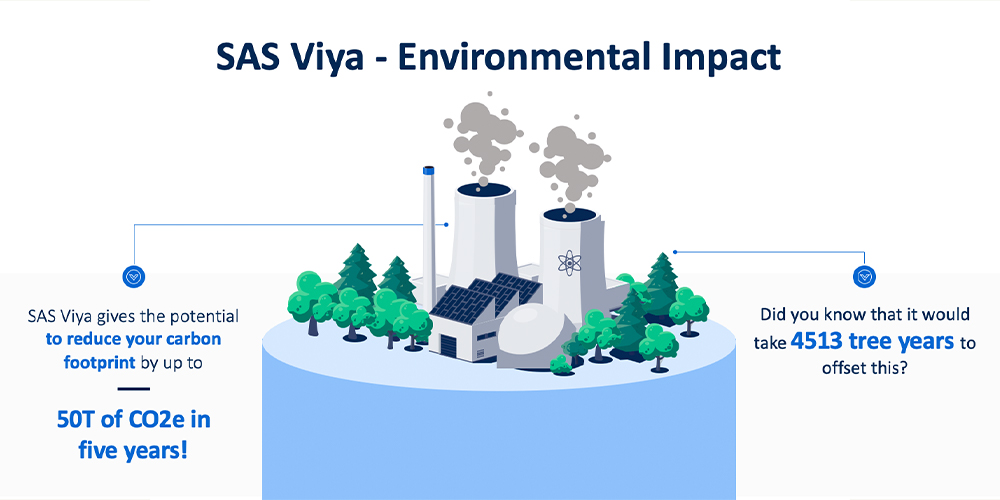Cloud computing has become the backbone of countless industries, helping organizations use the power of analytics, machine learning and AI for insights and innovation.
However, the rapid expansion of cloud computing made the cloud develop a significant carbon footprint. To put this into context, cloud computing has been calculated to be up to almost 4% of global carbon emissions, which is even greater than that generated by the airline industry.
But what can we do about it? And what about on-premises deployments? When it comes to the cloud versus on-premises debate, IDC, a leading market research firm, claims that the cloud is a more environmentally friendly choice compared to on-premises computing due to the greater efficiency of aggregating computing resources. So migrating AI and analytics workloads to the cloud seems like the way to go.
However, if more and more organizations can improve their computational efficiency in the cloud, even small improvements can make a big difference when we consider the cumulative impact.
 SAS® Viya® and the environment
SAS® Viya® and the environment
SAS Viya gives the potential to reduce carbon footprint by up to 50 tons of CO2e in five years. A mature tree would need 4,513 years to absorb this impact!
A fun exercise for exploring carbon footprint
To put this into perspective and calculate the potential environmental benefit of Viya, we used the Green Algorithm Calculator, a tool for estimating and reporting the carbon footprint of computational workloads. To complete the calculation, we used numbers from the Futurum benchmarking study, which included over 1,500 tests across different Azure Cloud architectures, showing that Viya is 30 times faster on average compared to open source and leading alternatives.
We assumed infrastructure and analytics workloads that would be typical for a large organization. and at the same time would mirror the technical setup used in the Futurum study, so we could apply the benefits numbers with confidence in our computations.
To calculate using the Green Algorithm Calculator, we followed these steps:
- Starting with runtime. Estimate the total hours it would take 50 data scientists to run data science workloads in a year. Assume an average of one hour per working day per data scientist, which totals 13,200 hours. Use this as the “runtime” in the calculator.
- Type, number and thermal design power (TDP) of cores. For this exercise, think about a large analytical environment with 188 CPUs, each with 12 cores and a TDP of 110W. In the calculator, choose “Other” for CPU type and use 110W for TDP. For “TDP per core,” calculate as 110W divided by 12 (cores per CPU).
- Memory available: Assume that it is 1400GB, which is typical for a large organization.
- Platform and server: We selected Azure cloud computing and set the server location to North America, East US.
- Choose "no" for the final two questions.
Now input the fact that Viya is 30 times faster on average compared to leading alternatives. Re-run the calculator, keeping all values the same except for “Runtime,” which should be 1/30 of the original value (440 hours). The difference in the CO2e impact between the two calculations represents the potential environmental benefit of reducing 50 tons of CO2e in five years.
This benefit is realized when organizations turn off their analytics environments after completing their tasks, as the energy consumption depends on the memory available, not the actual usage. Using resources in the cloud only when needed is an effective way to reduce greenhouse gas emissions.
This e-book shares more insights into how optimized performance in the cloud could benefit organizations
Spiros Potamitis and Francesco Rainini from the SAS Cloud Economics and Business Value team contributed to this article

